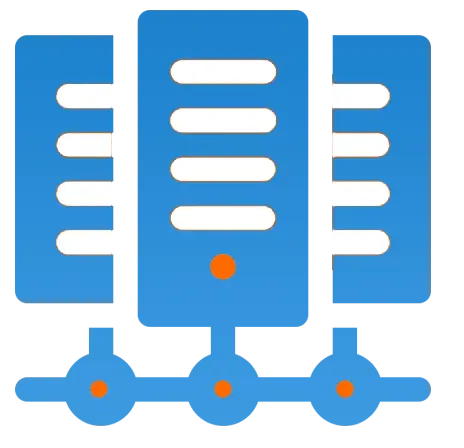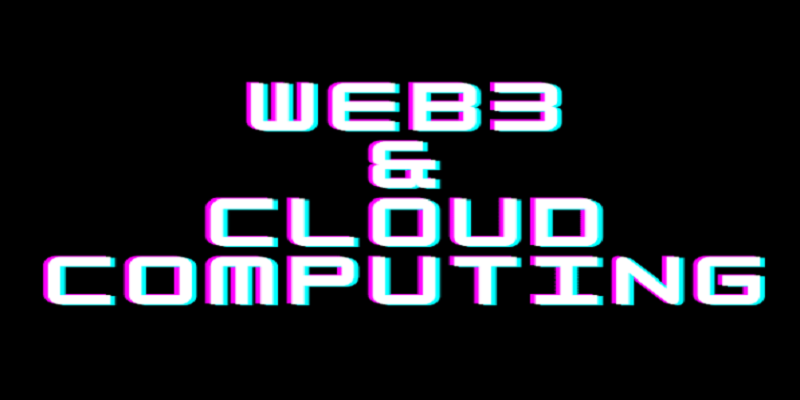Get 69% Off on Cloud Hosting : Claim Your Offer Now!
- Products
-
Compute
Compute
- Predefined TemplatesChoose from a library of predefined templates to deploy virtual machines!
- Custom TemplatesUse Cyfuture Cloud custom templates to create new VMs in a cloud computing environment
- Spot Machines/ Machines on Flex ModelAffordable compute instances suitable for batch jobs and fault-tolerant workloads.
- Shielded ComputingProtect enterprise workloads from threats like remote attacks, privilege escalation, and malicious insiders with Shielded Computing
- GPU CloudGet access to graphics processing units (GPUs) through a Cyfuture cloud infrastructure
- vAppsHost applications and services, or create a test or development environment with Cyfuture Cloud vApps, powered by VMware
- Serverless ComputingNo need to worry about provisioning or managing servers, switch to Serverless Computing with Cyfuture Cloud
- HPCHigh-Performance Computing
- BaremetalBare metal refers to a type of cloud computing service that provides access to dedicated physical servers, rather than virtualized servers.
-
Storage
Storage
- Standard StorageGet access to low-latency access to data and a high level of reliability with Cyfuture Cloud standard storage service
- Nearline StorageStore data at a lower cost without compromising on the level of availability with Nearline
- Coldline StorageStore infrequently used data at low cost with Cyfuture Cloud coldline storage
- Archival StorageStore data in a long-term, durable manner with Cyfuture Cloud archival storage service
-
Database
Database
- MS SQLStore and manage a wide range of applications with Cyfuture Cloud MS SQL
- MariaDBStore and manage data with the cloud with enhanced speed and reliability
- MongoDBNow, store and manage large amounts of data in the cloud with Cyfuture Cloud MongoDB
- Redis CacheStore and retrieve large amounts of data quickly with Cyfuture Cloud Redis Cache
-
Automation
Automation
-
Containers
Containers
- KubernetesNow deploy and manage your applications more efficiently and effectively with the Cyfuture Cloud Kubernetes service
- MicroservicesDesign a cloud application that is multilingual, easily scalable, easy to maintain and deploy, highly available, and minimizes failures using Cyfuture Cloud microservices
-
Operations
Operations
- Real-time Monitoring & Logging ServicesMonitor & track the performance of your applications with real-time monitoring & logging services offered by Cyfuture Cloud
- Infra-maintenance & OptimizationEnsure that your organization is functioning properly with Cyfuture Cloud
- Application Performance ServiceOptimize the performance of your applications over cloud with us
- Database Performance ServiceOptimize the performance of databases over the cloud with us
- Security Managed ServiceProtect your systems and data from security threats with us!
- Back-up As a ServiceStore and manage backups of data in the cloud with Cyfuture Cloud Backup as a Service
- Data Back-up & RestoreStore and manage backups of your data in the cloud with us
- Remote Back-upStore and manage backups in the cloud with remote backup service with Cyfuture Cloud
- Disaster RecoveryStore copies of your data and applications in the cloud and use them to recover in the event of a disaster with the disaster recovery service offered by us
-
Networking
Networking
- Load BalancerEnsure that applications deployed across cloud environments are available, secure, and responsive with an easy, modern approach to load balancing
- Virtual Data CenterNo need to build and maintain a physical data center. It’s time for the virtual data center
- Private LinkPrivate Link is a service offered by Cyfuture Cloud that enables businesses to securely connect their on-premises network to Cyfuture Cloud's network over a private network connection
- Private CircuitGain a high level of security and privacy with private circuits
- VPN GatewaySecurely connect your on-premises network to our network over the internet with VPN Gateway
- CDNGet high availability and performance by distributing the service spatially relative to end users with CDN
-
Media
-
Analytics
Analytics
-
Security
Security
-
Network Firewall
- DNATTranslate destination IP address when connecting from public IP address to a private IP address with DNAT
- SNATWith SNAT, allow traffic from a private network to go to the internet
- WAFProtect your applications from any malicious activity with Cyfuture Cloud WAF service
- DDoSSave your organization from DoSS attacks with Cyfuture Cloud
- IPS/ IDSMonitor and prevent your cloud-based network & infrastructure with IPS/ IDS service by Cyfuture Cloud
- Anti-Virus & Anti-MalwareProtect your cloud-based network & infrastructure with antivirus and antimalware services by Cyfuture Cloud
- Threat EmulationTest the effectiveness of cloud security system with Cyfuture Cloud threat emulation service
- SIEM & SOARMonitor and respond to security threats with SIEM & SOAR services offered by Cyfuture Cloud
- Multi-Factor AuthenticationNow provide an additional layer of security to prevent unauthorized users from accessing your cloud account, even when the password has been stolen!
- SSLSecure data transmission over web browsers with SSL service offered by Cyfuture Cloud
- Threat Detection/ Zero DayThreat detection and zero-day protection are security features that are offered by Cyfuture Cloud as a part of its security offerings
- Vulnerability AssesmentIdentify and analyze vulnerabilities and weaknesses with the Vulnerability Assessment service offered by Cyfuture Cloud
- Penetration TestingIdentify and analyze vulnerabilities and weaknesses with the Penetration Testing service offered by Cyfuture Cloud
- Cloud Key ManagementSecure storage, management, and use of cryptographic keys within a cloud environment with Cloud Key Management
- Cloud Security Posture Management serviceWith Cyfuture Cloud, you get continuous cloud security improvements and adaptations to reduce the chances of successful attacks
- Managed HSMProtect sensitive data and meet regulatory requirements for secure data storage and processing.
- Zero TrustEnsure complete security of network connections and devices over the cloud with Zero Trust Service
- IdentityManage and control access to their network resources and applications for your business with Identity service by Cyfuture Cloud
-
-
Compute
- Solutions
-
Solutions
Solutions
-
 Cloud
Hosting
Cloud
Hosting
-
 VPS
Hosting
VPS
Hosting
-
GPU Cloud
-
 Dedicated
Server
Dedicated
Server
-
 Server
Colocation
Server
Colocation
-
 Backup as a Service
Backup as a Service
-
 CDN
Network
CDN
Network
-
 Window
Cloud Hosting
Window
Cloud Hosting
-
 Linux
Cloud Hosting
Linux
Cloud Hosting
-
Managed Cloud Service
-
Storage as a Service
-
 VMware
Public Cloud
VMware
Public Cloud
-
 Multi-Cloud
Hosting
Multi-Cloud
Hosting
-
 Cloud
Server Hosting
Cloud
Server Hosting
-
 Bare
Metal Server
Bare
Metal Server
-
 Virtual
Machine
Virtual
Machine
-
 Magento
Hosting
Magento
Hosting
-
Remote Backup
-
 DevOps
DevOps
-
 Kubernetes
Kubernetes
-
 Cloud
Storage
Cloud
Storage
-
NVMe Hosting
-
 DR
as s Service
DR
as s Service
-
-
Solutions
- Marketplace
- Pricing
- Resources
- Resources
-
By Product
Use Cases
-
By Industry
- Company
-
Company
Company
-
Company
Understanding Web3 and its potential impact on the future of the cloud
Table of Contents
Introduction
The internet has come a long way since its inception, from the first web pages to the cloud infrastructure that powers today’s digital economy. The next stage of the internet’s evolution is known as Web3.
It’s a new kind of Internet that exactly translates what you type and understands what you say, no matter what medium you use – text, voice, or other media. In addition, where all of the content you consume is more personalized than ever before.
Web3 represents a major shift in how we interact with the internet and cloud computing. In this blog post, we’ll explore what Web3 is, how it works, and its potential impact on the future of the cloud.
What is Web3?
Web3 is a third-generation of the internet, built on top of blockchain technology to make the internet more accessible, private, and secure for users. Unlike the current internet, which is centralized and controlled by a few major corporations like Google or Amazon, Web3 is a decentralized web powered by a network of nodes owned by users rather than centralized authorities.
At its core, Web3 is about giving users more control over their data and online identity and enabling them to interact with each other and digital assets more securely and transparently. It represents a major shift away from the centralized model of the current internet and towards a more open and decentralized model that is better aligned with the principles of the blockchain.
Web3 Dedicated Servers Hosting:
Web3 Dedicated Servers Hosting represents a specialized infrastructure catering to the needs of decentralized applications and blockchain networks within the Web3 ecosystem. These servers offer robust, dedicated resources optimized for hosting blockchain nodes, decentralized applications (dApps), and other decentralized services. They ensure high performance, reliability, and security while supporting various blockchain networks like Ethereum, Polkadot, Solana, and others. Emphasizing decentralization, these hosting solutions prioritize data privacy, smart contract execution, interoperability, and scalability while implementing advanced security measures. This infrastructure serves as a fundamental backbone for Web3 applications, providing a resilient environment for the decentralized future of the internet.
How does Web3 work?
Web 3.0 works on the amalgamation of the decentralization of interactiveness of Web 1.0 and the user-friendly interface of Web 2.0.
Web 3.0 is built upon the blockchain, a decentralized ledger technology that enables transparent and secure transactions without a central authority. The blockchain consists of a network of nodes that collaborate to authenticate and record transactions, with each node having an identical copy of the ledger.
Simply put, Web3 allows users to take charge of their online experience and enhance their security through blockchain technology. Additionally, artificial intelligence, machine learning, and natural language processing have important roles to play in emulating human pattern recognition and communication through symbols and language.
Web3 empowers users to manage their data and digital assets, enabling interaction with digital services and other users via a decentralized network of nodes. This approach eliminates the presence of a central authority, thereby avoiding a single point of failure.
Web3 Cloud Computing:
| Aspect | Description |
|---|---|
| Service Provider | [Name of the Web3 Cloud Computing Service Provider] |
| Supported Blockchains | [List of supported blockchain networks (e.g., Ethereum, Polkadot, Solana)] |
| Decentralization | [Degree of decentralization in infrastructure and data handling] |
| Smart Contract Support | [Ability to deploy, execute, and manage smart contracts] |
| Data Privacy | [Measures taken to ensure user data privacy and encryption] |
| Interoperability | [Compatibility with different Web3 protocols and networks] |
| Scalability | [Ability to scale resources in response to demand fluctuations] |
| Consensus Mechanism | [Description of the consensus mechanism utilized (e.g., Proof of Stake, Proof of Work)] |
| Security Measures | [Overview of security protocols and measures against vulnerabilities] |
| Cost Model | [Details about pricing structures, payment options, and fees] |
| Customer Support | [Availability and types of support channels offered] |
The potential impact of Web3 on the future of the cloud
Web3 can transform how we interact with the cloud and the internet. Here are some of the potential impacts of Web3 on the future of the cloud:

Decentralization
The principle of decentralization lies at the core of Web3, empowering users with greater control over their digital assets and data. In stark contrast to the centralized model of the existing internet and cloud, which is dominated by a handful of corporations, Web3 represents a significant departure, offering a more decentralized and democratic landscape.
Security and Privacy
Built on the blockchain, Web3 boasts a superior level of security and privacy compared to the current internet and cloud, enabling users to enjoy greater control over their digital assets and data. With its inherent transparency, the blockchain lends an added layer of confidence to users, assuring them that their information is secure and that they can fully trust the platform.
Transparency
Web3 is built on the blockchain, a technology that offers unparalleled transparency. With every transaction on the network visible to users, there is a heightened level of confidence in the platform’s fairness and transparency. Users can rest assured that the system is designed with openness and accountability at its core.
Interoperability
Built on a decentralized network that is not controlled by any single organization, Web3 has the potential to create a more interoperable internet and cloud. This means that users can enjoy a more seamless and integrated experience when interacting with each other and with digital assets.
By breaking down barriers and fostering collaboration across the digital landscape, Web3 represents a significant step forward towards a more connected and inclusive future.
New Business Models
Web3 has the potential to usher in new business models that are more aligned with the principles of the blockchain, including decentralized finance (DeFi). With DeFi, users can access financial services without the need for a centralized authority, allowing for greater autonomy and control over their finances.
This represents a major shift towards a more democratic and accessible financial landscape, and is just one example of the transformative power of Web3.
Conclusion
Web3 represents a groundbreaking shift in how we engage with the internet and cloud computing. By creating a decentralized network on top of the blockchain, Web3 can revolutionize how we interact with digital assets and each other, ushering in a new era of security, privacy, and transparency in the online world.
Though in its nascent stages, Web3 presents a remarkable opportunity for individuals and businesses seeking to embrace the future of the internet and the cloud.
Recent Post

Stay Ahead of the Curve.
Join the Cloud Movement, today!
© Cyfuture, All rights reserved.
Send this to a friend

 Pricing
Calculator
Pricing
Calculator
 Power
Power
 Utilities
Utilities VMware
Private Cloud
VMware
Private Cloud VMware
on AWS
VMware
on AWS VMware
on Azure
VMware
on Azure Service
Level Agreement
Service
Level Agreement 


















